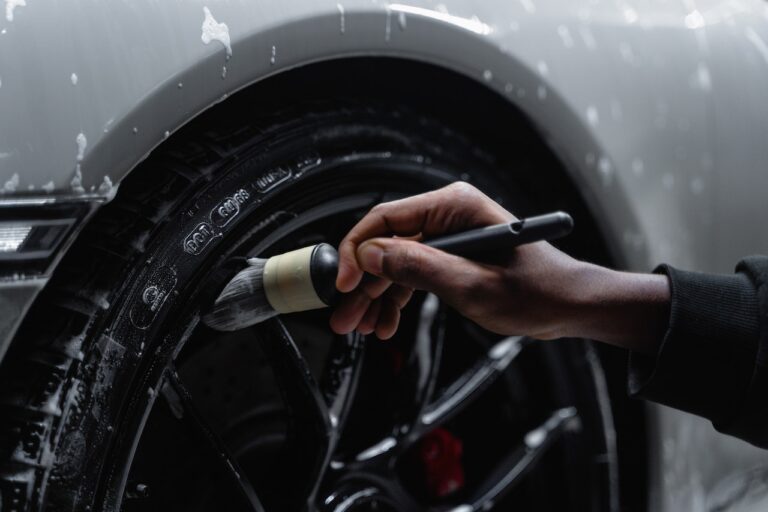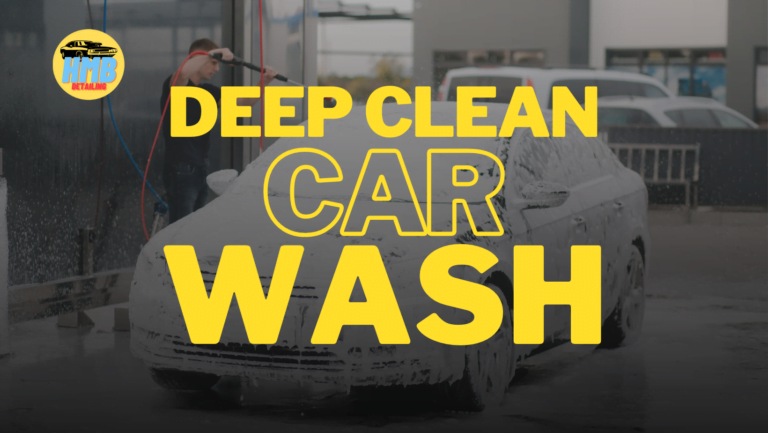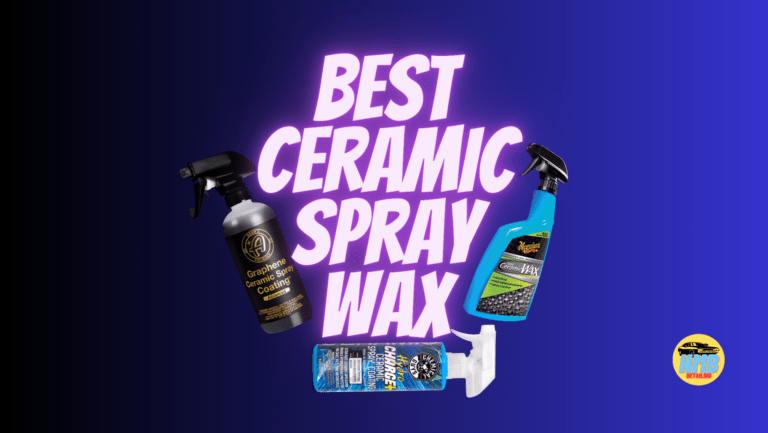The Dos and Don’ts of DIY Car Detailing: What You Need to Know
Car detailing is a considerable way to keep your vehicle clean and shiny. However, professional detailing can be expensive, so many people prefer to solve such tasks themselves. DIY car detailing can save you money, but you need to be accurate and have some experience to avoid mistakes that can lead to higher costs and car damage.
If you are a car enthusiast or looking to save money while keeping your car’s look at its best, DIY car detailing can be a great option. However, there are some dos and don’ts to keep in mind to be sure that your efforts don’t end up doing more harm than good. In this post, we will discuss the essential dos and don’ts of DIY car detailing and explain everything you need to know for successful car detailing at home.
The Dos of DIY Car Detailing:
1. Do start with a thorough wash
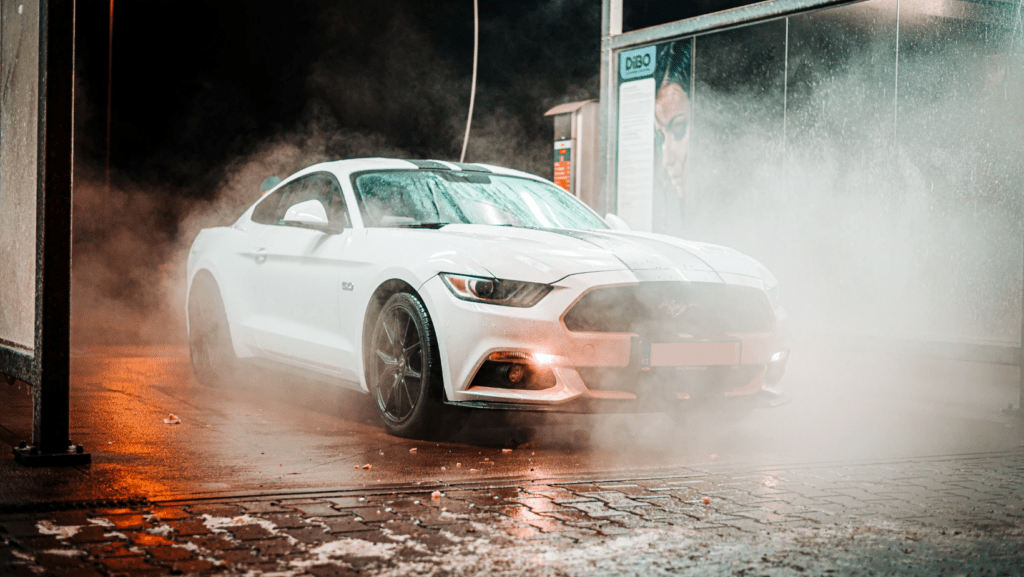
Every time you are looking to work with the exterior of your car, it’s essential to start with a clean slate. Before you start any DIY car detailing procedures, wash your vehicle thoroughly, paying attention to parts that accumulate the most debris and dirt. If your car is slightly dusty and you don’t have access to a water source, use Waterless Car Wash before detailing. Such places as wheels, wheel wells, and undercarriage. You should start any car wash with cleaning wheels, so the dirt from them will not spread on freshly cleaned car body parts.
The proper way to make a maintenance car wash is by using 2 step wash method. The first step is a high-pressure wash, and the second one is 2 bucket method. We have a detailed guide for the 2-bucket wash method, so feel free to check it to make it without any harm to your car’s surface. For wax application, 2 step wash is not enough, so be sure to make a deep clean of the car’s paint before applying wax to it.
2. Do use high-quality cleaning and detailing products for DIY Car Detailing
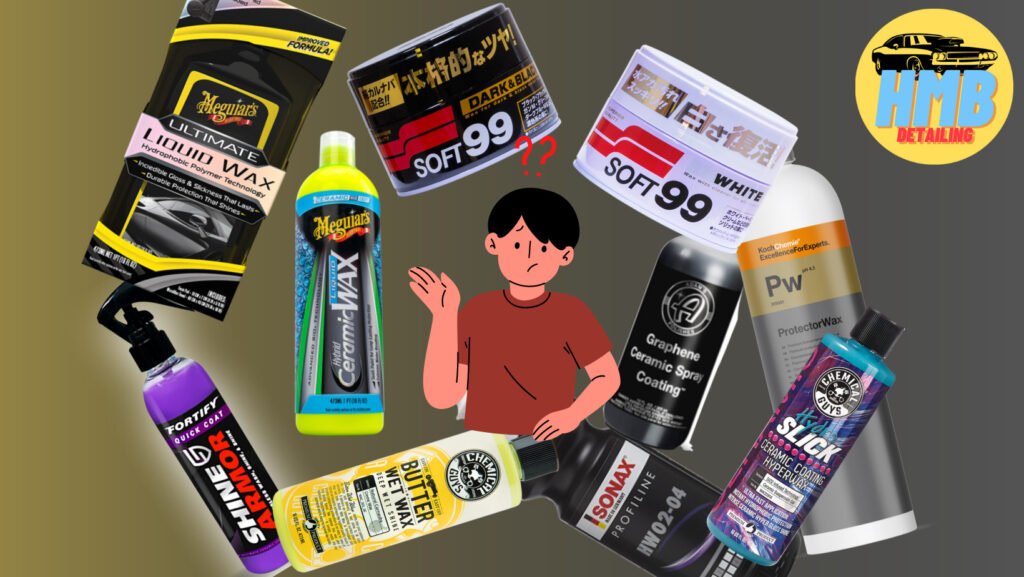
The quality of your cleaning and detailing products will play a significant role in the outcome of your detailing procedures and the time you will spend on them. Be sure to use high-quality products specifically designed for automotive use and for a specific area of your car, you are working with. You shouldn’t use, for example, a tire shine on your interior’s plastic. As well, you shouldn’t use household products on your car cause they can harm your car’s finish.
High-quality cleaning products, together with the same protective products, will create a long-lasting effect and maximum protection on your car. Do not try to save money on detailing products. At the end of the day, you will spend more money fixing the causes of using the wrong chemicals. Check our best-detailing products for beginners to know where to start.
3. Do use the right tools for DIY Car Detailing
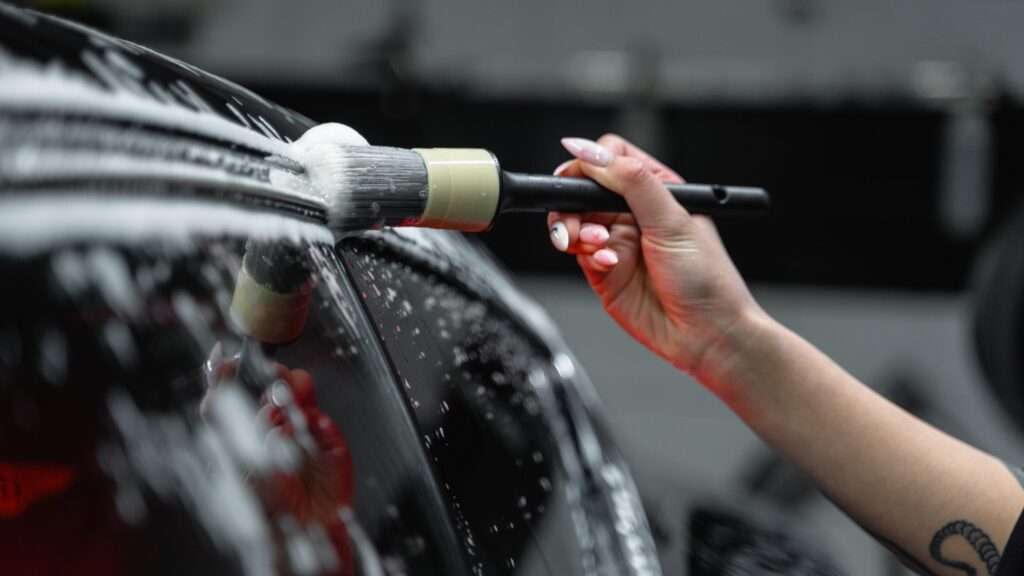
Using the right detailing tools is just as important as using the right cleaning products. Your car is full of a variety of materials, and some of them can be sensitive to low-quality or abrasive tools. Make sure to have sets of brushes, microfiber towels, drying towels, and applicators with you. You should separate tools for wheel cleaning, interior detailing, and car paint care.
For those who start their detailing root, we have a list of the best detailing tools for beginners that will help you to gather your first high-quality detailing arsenal.
4. Do work in sections

Work in small detailing sections to avoid missing spots and ensure give each area of your car the attention it deserves. It will also help you to keep track of areas you already detailed and areas that you still need to focus on.
For a variety of detailing tasks, a small detailing section can be different. Usually, for exterior detailing, these sections can be divided into body parts: hood, doors, roof, fenders, and trunk. For interior detailing, you can divide it into the headliner, seats one-by-one, dashboard, door panels, other interior plastic, floor mats, and carpet.
The Don’ts of DIY Car Detailing:
1. Don’t use abrasive materials
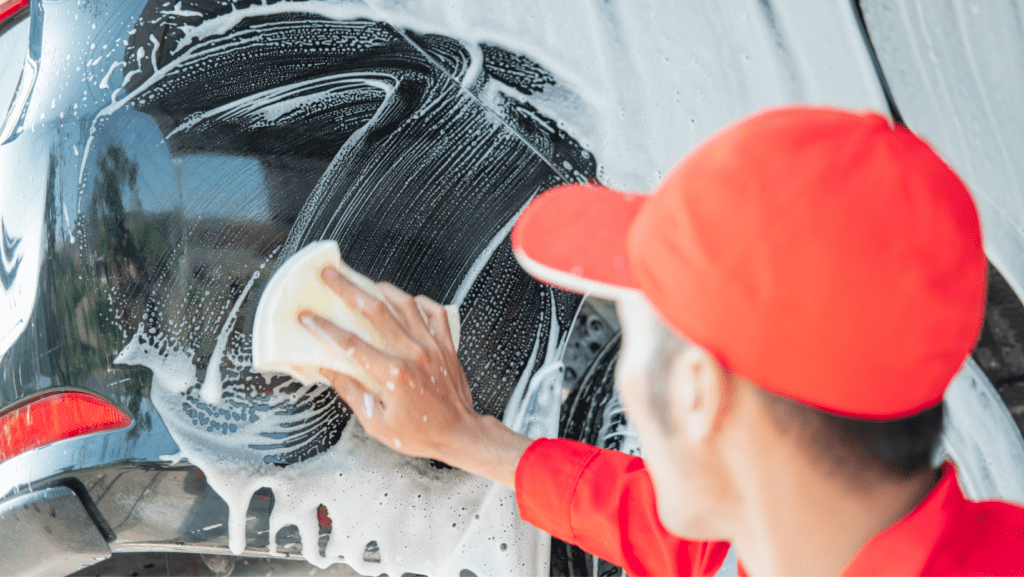
When detailing your car, avoid using abrasive materials, such as scrub brushes, steel wool, and harsh chemicals. They might help you to remove some dirt and contaminants but will scratch the paint or other surfaces.
Instead, use specialized tools and chemicals designed for automotive use. They will ensure the secure cleaning of your car and remove all wanted contaminants.
2. Don’t use too much pressure

Applying too much pressure when detailing a car can lead to damage and scratches. Whenever you polish, scrub, or dry your car, avoid applying excessive pressure. Use a light touch, and let the cleaning or drying product do the work.
It’s better to repeat the process and achieve wanted results than applying pressure and leaving swirls and scratches.
3. Don’t forget to rinse
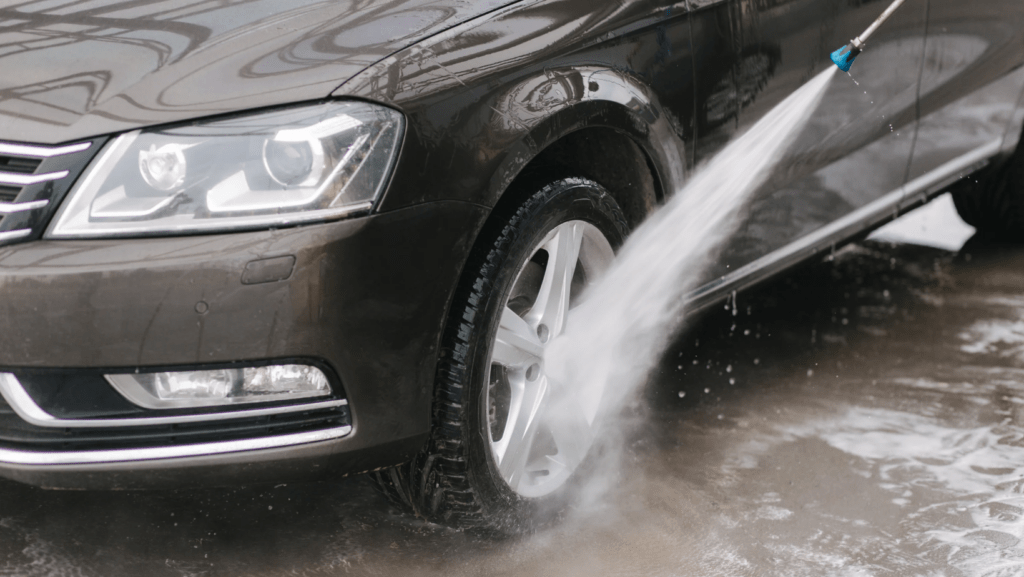
After cleaning and polishing your car, be sure to rinse it thoroughly with clean water. Leaving even specialized car cleaning products on your car’s paint can cause damage over time. As well, you want to avoid mixing different detailing products on your car. For example, if you don’t rinse wheel cleaner from your rims completely and then apply wheel wax, don’t expect wax to provide maximum protection for your rims.
4. Don’t neglect the interior
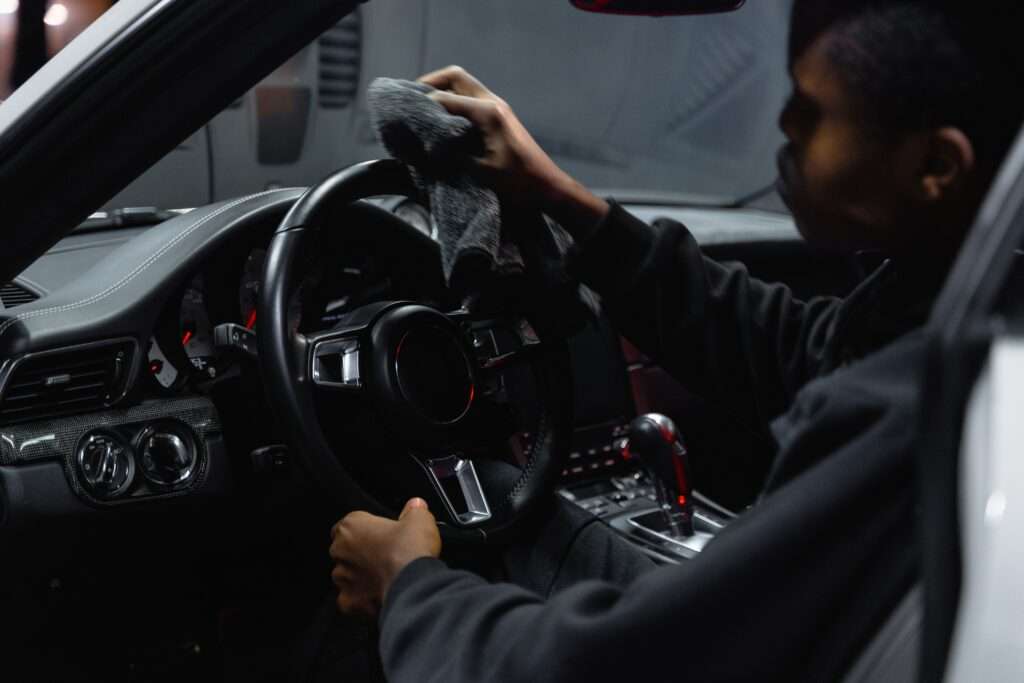
While the exterior of your car is what people around see most of the time, the car interior is as important. A car interior is what you, as a driver, see and use most of the time. So why not make it more comfortable for yourself? Above this, a dirty car interior can pollute the air you are breathing and cause respiratory diseases. Your steering wheel has plenty of bacteria on it, and you touch it every day for several hours.
Be sure to vacuum floor mats, car carpets, and fabric seats. Don’t forget to clean the glass, dashboard, and steering wheel. It won’t take so much time from you but will give you a lot of pleasure when you will spend hours in a clean car.
Conclusion
Car detailing market share is growing year by year, so it’s not surprising that more people want to become part of it. DIY car detailing can be a rewarding and cost-effective way of keeping your car clean and shiny for longer. However, don’t forget that making mistakes when detailing your car at home can cause your car damage and high costs of repairing it.
By following our dos and don’ts of DIY car detailing, you can achieve high-class results without leaving swirls, scratches, or other paint damage. With the right tools, detailing products, and techniques, you can keep your car looking like new for years to come.

